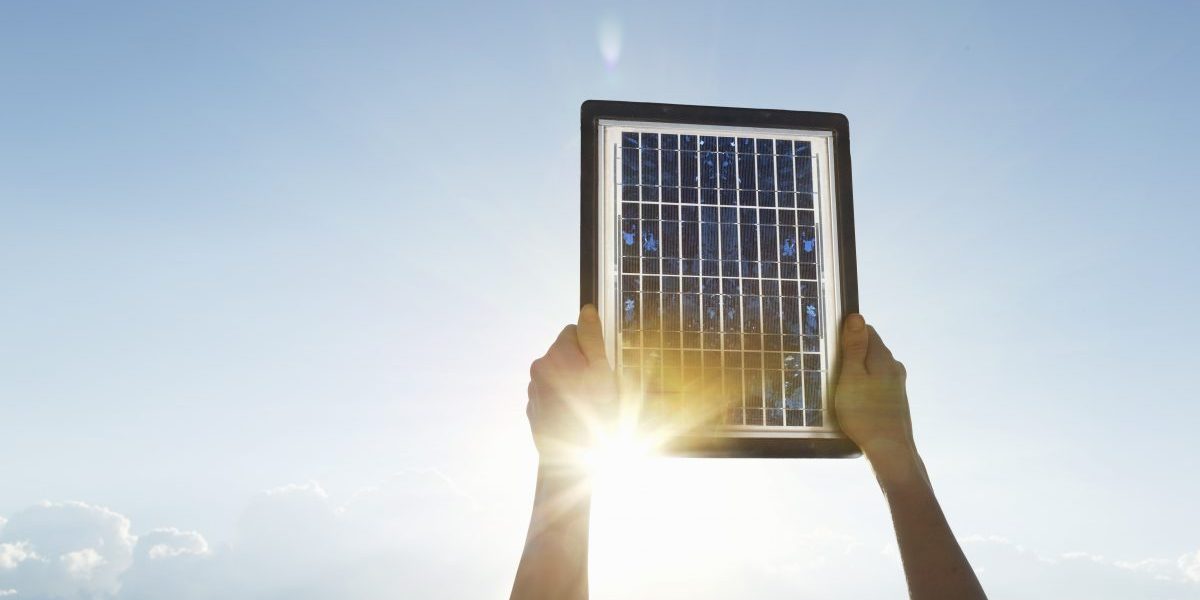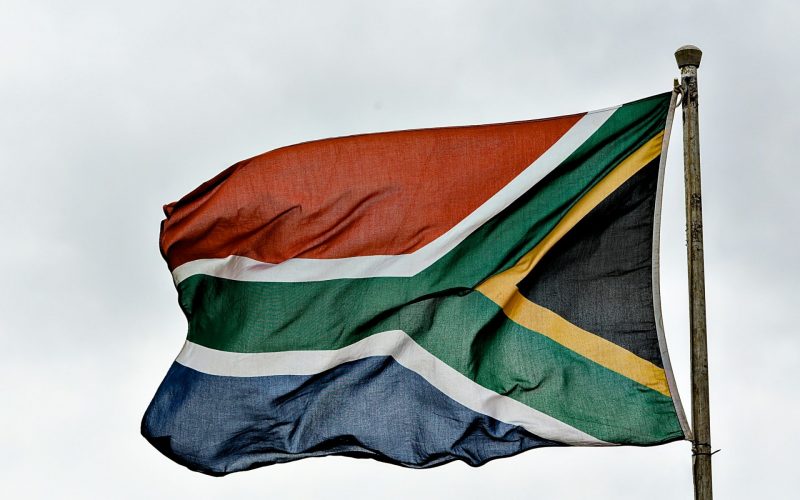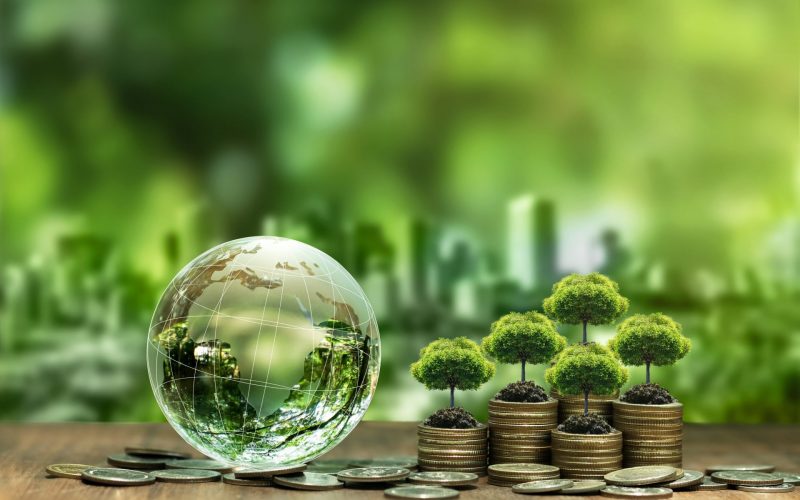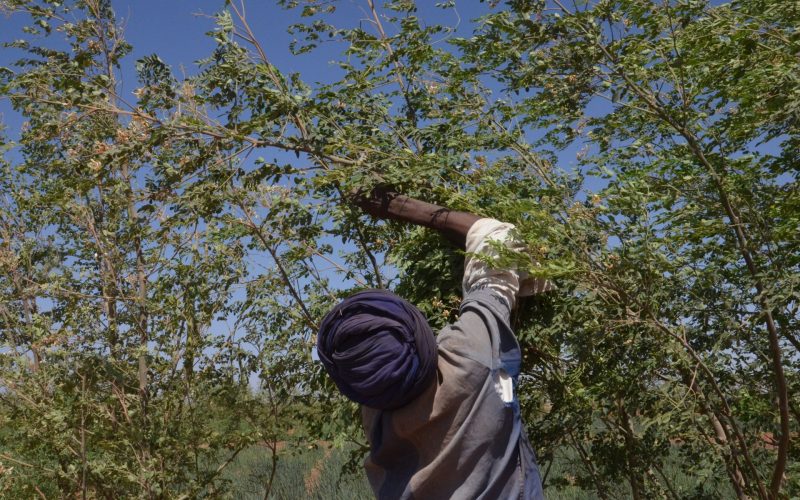Recommendations:
- Talk energy not climate change: Energy security, access, job creation and industrialisation opportunities are ranking high on the political agendas in African and European nations. A climate change framing may easily lead to deadlocks in dialogue, whereas energy security, economic development and job creation are central priorities in most African countries.
- Talk business not aid: Create mutually respectful relationships that enable sustainable business conditions that are more competitive and advantageous than competing coal power deals. Innovation benefits between African and European partners need to be shared. Localisation of manufacturing and assembling jobs can create local industries and enable business and job opportunities for the long term.
- Think beyond technological innovation: social innovation and acceptance is critical for the diffusion of renewable energy technologies. Sharing benefits inclusively is essential to avoid new technologies being unused or stigmatised.
- Support open dialogue, transparency and civil society in making energy technology negotiations visible and evidence-based: Increasing transparency and supporting evidence-based decision making can help to increase the ability of civil society to scrutinise government expenditure in the energy sector.
Executive summary
The challenge of defining African energy futures gains complexity as local politics interact with geopolitical powers and global climate change concerns. The AU-EU strategy focuses on ‘innovation for green transitions’, while European companies continue to dominate African fossil fuel markets. The Chinese strategy to decarbonise their domestic markets encouraged Chinese coal industries to build abroad. How can African societies define their own energy futures without turning into ‘living sustainability labs’ or stepping into debt traps set out by foreign actors? African agency, open dialogue, transparency, evidencebased decision making and inclusive innovation can enable beneficial change that avoids foreign exploitation.
Introduction
Many countries on the African continent currently stand at the crossroads of defining their energy futures. Only a third of Africa’s people currently have access to electricity, which creates backlogs in education, health, well-being and income opportunities.1International Energy Agency (IEA), Africa Energy Outlook 2019, World Energy Outlook special report (Paris: IEA, 2019), https://www.iea.org/reports/africa-energy-outlook-2019.Solutions to achieving universal access to clean and affordable energy by 2030 (Sustainable Development Goal 7) 2Sustainable Development Goal 7 aims to ‘ensure access to affordable, reliable, sustainable and modern energy for all’. See: UN Department of Economic and Social Affairs (DESA), ‘Progress to achieving Goal 7’, https://sustainabledevelopment.un.org/sdg7.are heavily contested in many countries.
Choices about infrastructure for universal energy supply have implications for climate change, which affects African nations disproportionally. As a result, the African climate agenda mainly focuses on the questions of how to adapt to the impacts of climate change and how to build more climate-resilient economies and societies.3AU, Environment, Climate Change, Water, Land and Natural Resources, 2020, https://au.int/en/directorates/environment-climatechange-water-land-and-natural-resources; and AU, African Union Climate Change Strategy, 2015, https://www.un.org/en/africa/osaa/pdf/au/cap_draft_auclimatestrategy_2015.pdf. These are important concerns for societies which predominantly rely on income from agricultural activities. Over 70% of adult workers in sub-Saharan Africa relied on agricultural activities and family farming to sustain their livelihoods in 2016.4Sam Moyo, “Family farming in sub-Saharan Africa: its contribution to agriculture, food security, and rural development” (Working Paper 150, International Policy Centre for Inclusive Growth, Food and Agriculture Organization of the UN, United Nations Development, Brasilia, 2016), www.fao.org/3/a-i6056e.pdf.
The politics of the international negotiations on climate change led African negotiators to shy away from addressing the central questions of future energy supply and associated emissions effectively. Concerns about finance for adaptation and loss and damage direct the African agendas instead.5Britta Rennkamp, ‘Negotiating Climate Change between Unequal Parties: COP25 from an African Perspective’, Africa Portal, December 3, 2019, https://www.africaportal.org/features/negotiating-climate-change-between-unequal-parties-cop25-africanperspective/.
At the same time, contestations about energy futures, access and security in supply increasingly polarise African societies. While renewable energy technologies have become more accessible and affordable, plans to build new coal plants loom in many countries on the continent.6International Renewable Energy Agency (IRENA), Renewable Power Generation Cost in 2019, (Abu Dhabi: IRENA, 2020), https://www.irena.org/publications/2020/Jun/Renewable-Power-Costs-in-2019; and Global Energy Monitor, ‘Global Coal Plant Tracker 2020’, https://endcoal.org/tracker/.
Decisions on energy futures in Africa reach beyond the scope of national governments and regional integration. Geopolitical relations with the suppliers of energy technology in China and Europe increasingly stand at the crux of these choices. The Chinese government launched the ‘Belt and Road Initiative’ (BRI), which strategically focuses on economic cooperation in energy and mineral resources in Africa and Asia.7Government of China, Action Plan on the Road and Belt Initiative, (State Council, Peoples Republic of China, 2015), english.www.gov.cn/archive/publications/2015/03/30/content_281475080249035.htm.The promotion of coal-fired plants is a central element of BRI infrastructure projects. Chinese domestic policies support phasing out coal in favour of renewable energy, so the Chinese government encourages local coal industries to explore foreign markets, which has resulted in coal-fired plant investments in 34 projects across 11 African countries.8Dana Ullman, ‘When Coal Comes to Paradise,’ Foreign Policy Magazine, June 9, 2019, https://foreignpolicy.com/2019/06/09/whencoal-came-to-paradise-china-coal-kenya-lamu-pollution-africa-chinese-industry-bri/.The EU’s Comprehensive Strategy with Africa focuses on the promotion of renewable energy and the diffusion of climate compatible technology towards inclusive sustainable development.9European Commission, Joint Communication to the European Parliament and the Council: Towards a comprehensive Strategy with Africa, JOIN (2020) 4 (Brussels: European Commission, 2020), https://op.europa.eu/en/publication-detail/-/publication/55817dfb-61eb-11ea-b735-01aa75ed71a1/language-en.The strategy follows a similar rationale to promote decarbonisation in and outside the EU. The EU strategy to enable ‘green transitions’, however, conflicts with the operations of many powerful European multinational companies that continue to dominate the exploration of fossil fuel resources in Africa.10Kyra Bos and Joyeeta Gupta, ´Stranded assets and stranded resources: Implications for climate change mitigation and global sustainable development,’ Energy Research and Social Science 56 (2019).
This raises the question of how African societies can make the choices that are best for them, without stepping into debt traps or turning into ‘living labs’11For definitions, see for example: Wikipedia, ‘Living Labs’, https://en.wikipedia.org/wiki/Living_lab. Typically living labs are initiatives driven by the actors in the Global North. An Irish based European-African initiative conducts living labs in 18 African countries. See: IST Africa, http://www.ist-africa.org/home/default.asp?page=initiative. where energy policy outcomes are determined by external players.
This policy brief presents findings from hotspots in sub-Sahara African countries where plans for coal-fired power plants may clash with renewable energy policy discourses. The brief proposes recommendations for African agency and scholarship to strengthen the science-policy interface for successful management of the looming energy transitions to maximise the socio-economic benefit for African societies.
Hotspots in fossil fuel and renewable energy development in Africa
Most of Africa’s coal power plants are currently operating in Morocco, Namibia, Zimbabwe, Zambia and South Africa.12Global Energy Monitor, “Global Coal Plant Tracker”.South Africa accounts for 75% of coal power energy generating capacity on the continent. The African continent currently only accounts for 8% of global emissions while South Africa alone contributes about 1%.13Climate Watch, Historical GHG Emissions: comparison of the regions Africa, Europe and the World using CAIT Data Source, https://www.climatewatchdata.org/ghg-emissions.
The number of coal-fired power plants may significantly change the landscape of African energy futures in the next 50 years. Currently, governments have proposed 21 new plants in 17 African countries.14Global Energy Monitor, “Global Coal Plant Tracker”.If these projects go ahead, they will contribute significantly to the emissions burden for 40 years and the global temperature goal will move further out of reach.
These dynamics raise the question of why governments pursue the development of fossil fuel-based power plants, and particularly coal-fired plants, while opportunities to build sustainable, more innovative technological pathways are becoming more affordable and accessible.15IRENA, Renewable Power Generation Costs in 2019 (Abu Dhabi: International Renewable Energy Agency, 2020), https://www.irena.org/publications/2020/Jun/Renewable-Power-Costs-in-2019.
Evidence from a few hotspots of new coal developments may provide some insights. South Africa dominates the regional Southern African energy pool with its coal-based energy sector, which generates about 90% of its electricity. Africa’s only commercial nuclear plant adds another 5% to the generation capacity. Renewable energy generated mainly from wind and solar photovoltaic technologies add another 5%, despite a much higher potential.16Republic of South Africa, Department of Energy, Commodity Flows and Energy Balances (Pretoria: Department of Energy, 2017), www.energy.gov.za/files/media/Energy_Balances.html.The share of renewable energy is relatively low because of the political and cultural legacy in coal mining, which created a persistent anti-renewable energy discourse that closely associates renewable energy technology with privatisation and liberal economic ideology.17Jacklyn Cock, ‘South Africa must end its coal habit, but it’s at odds about when and how,’ The Conversation, February 27, 2019 https://theconversation.com/south-africa-must-end-its-coal-habit-but-its-at-odds-about-when-and-how-112016; Luphet Chilwane and Jason Urbach, `The great Eskom privatisation debate,’ IOL News, March 3, 2019, https://www.iol.co.za/news/opinion/the-greateskom-privatisation-debate19605960; Jeff Rudin, ‘Renewable Energy, a prisoner of privatisation,’ The Daily Maverick, November 13, 2014, https://www.dailymaverick.co.za/opinionista/2014-11-13-renewable-energy-a-prisoner-of-privatisation/#gsc.tab=0.
The updated plan for the electricity sector in South Africa foresees an expansion of renewable energy and the construction of two new build coal plants over the next 10 years.18Republic of South Africa, Department of Energy, Integrated Resource Plan, Government Gazette 42784, (Pretoria: Department of Energy, 2019).Other polluting sectors, like the coal-to-liquids industries, energy intensive smelting industries, as well as oil refineries, go largely unregulated without following a similar plan. If the Integrated Resource Plan (IRP) can be implemented successfully, a clean energy transition for South Africa may be possible. Most of South Africa’s aging coal plants need to be replaced by 2040, except for the two plants that are still under construction. The proposed new plants in the IRP 2019 will be built as part of the Coal Programme for Independent Power Producers.19For more detail see Gregory Ireland and Jesse Burton, “An assessment of new coal plants in South Africa’s electricity future” (Research Report, Energy Research Centre, University of Cape Town, 2018), https://cer.org.za/wp-content/uploads/2018/05/ERCCoal-IPP-Study-Report-Finalv2-290518.pdf.South Africa’s electricity sector is closely intertwined with its neighbouring countries Botswana, Mozambique, Zimbabwe and Namibia. All four neighbours have new coal plants on their political agendas. In Zambia, Malawi, Ethiopia and Egypt, permissions for new coal plants have been granted and the majority of these proposed new plants will be financed by Chinese investments.20Global Energy Monitor, “Global Coal Plant Tracker”
In East Africa, the Tanzanian government has pursued an increasing roll out of coal power plants over the past decade with significant Chinese involvement. Similarly, Tanzania’s East African neighbour Kenya also has ambitions to build two new coal plants, which may set the East African energy pool onto a fossil fuel-intensive pathway.
In Kenya, the government proposed building the nation’s first coal fired plant on a UNESCO heritage side, the island of Lamu. The plant is part of a larger Chinese financed infrastructure programme that includes a contested high-speed rail network between Nairobi and Mombasa, potentially reaching into Kampala, Uganda. The proposed construction of the power plant in Lamu ignited significant resistance from residents, heritage organisations and environmental organisations, which organised themselves to dispute the authorisation processes. The process was subsequently halted, which may have implications for the construction of other Chinese financed power plants in Africa.21Jevans Nyabiage, ‘China meets resistance over Kenya coal plants,’ South China Morning Post, July 14, 2019, https://www.scmp.com/news/china/diplomacy/article/3018489/china-meets-resistance-over-kenya-coal-plant-test-its-african.Kenya’s second proposed plant, situated in the Kaloleni province, is currently in the pre-permission stage and has also attracted social resistance.22Global Energy Monitor, ‘Kitui Power Station,’ https://www.gem.wiki/Kitui_power_station.
The Kenyan case demonstrates the significant role that civil society can play in energy decision-making processes. Research on the coalitions and political networks in these decision-making processes, however, is relatively scarce. A few exceptions have shown how political coalitions evolve in support or opposition of specific energy technology decision-making processes in Kenya, Tanzania and South Africa.23Thabit Jacob, ‘Competing energy narratives in Tanzania: Towards the political economy of coal,’ African Affairs 116, no. 463 (2017): 341–353; Michael Boulle, ‘The hazy rise of coal in Kenya: The actors, interests, and discursive contradictions shaping Kenya’s electricity future,’ Energy Research and Social Science 56 (2019):101205; Britta Rennkamp, ‘Power, coalitions and institutional change in South African climate policy,’ Climate Policy 19, no 6 (2019): 756-770.An analysis of Tanzania’s energy policy found competing discourses between African states ‘as leaders in the climate change agenda have been greatly overshadowed by recent developments related to coal investments that have triggered a clash between the energy security and sustainability narratives.’24Jacob, “Competing energy narratives in Tanzania”, 349.Further analysis of South African climate and energy policy showed that the balance of power between coalitions in the decision-making processes matters for the policy outcome.25Rennkamp, “Power, Coalition and Institutional Change”.
The decisions of individual governments depend on a number of factors:
- The structure of domestic policy networks determines political decision-making processes and policy outcomes. Outcomes depend on the ability of political actors to organise themselves into coalitions in support or opposition of specific interventions.
- In the absence of civil society, government elites can go unscrutinised in their decisionmaking processes, aiming for the best political outcome for themselves. This may differ from the most beneficial outcome for broader citizenry.
- The competitiveness of the deal matters for the ways governments and societies will react.
Geopolitical competition between the EU and China for Africa’s energy technology supply
China’s Belt and Road Initiative has been designed to expand Chinese business opportunities beyond national markets with the aim of addressing infrastructural backlogs in developing countries. Initially, the programme had targeted four nations in Africa, but recently China reported that 43 of the 54 nations in Africa have signed agreements to collaborate on infrastructure development with the Chinese government, as part of the Belt and Road Initiative.26Government of China, ‘China’s Belt and Road Network, List of countries that have signed cooperation documents with China to jointly build the “Belt and Road”’, https://www.yidaiyilu.gov.cn/info/iList.jsp?tm_id=126&cat_id=10122&info_id=77298.
Loan agreements are often linked to guarantees that are linked to access to natural resources, mines, infrastructure or fiscal revenue. Bilateral agreements for large infrastructural investments can create risks for political capture, corruption and negative environmental impacts, if procurement processes go unscrutinised in societies with little public accountability and weak civil society.27Michele Ruta, ‘Three opportunities and three risks of the Belt and Road Initiative,’ World Bank Blogs, May 4, 2018, https://blogs.worldbank.org/trade/three-opportunities-and-three-risks-belt-and-road-initiative
The Chinese Belt and Road Initiative creates competition for European investors and exposes the EU’s conflicting promotion of sustainable development and fossil fuel exploitation on the African continent. The Chinese competition is real for European actors. The Chinese diplomatic strategies focus on the negotiation of bilateral agreements, which differ from less coordinated European approaches towards a comprehensive transition through innovation. The Chinese government can speak with one voice, while the EU pursues a strategy which builds on the diverse approaches of its 27 member states and powerful multinational companies.
There are opportunities for Europe to position itself strategically if it organises its political instruments towards the core of its strategy with Africa: enabling innovation for ‘green transitions’.28European Commission, “Towards a Comprehensive Strategy with Africa”, 6.Europe has long-standing bilateral and multilateral relationships with the AU and most African governments and regional organisations. Effective coordination of the substantial resources spent on economic, environmental, scientific and technological and development cooperation can enable innovation towards green transitions as proposed in the EU’s Comprehensive Strategy with Africa.
Translating innovation into political and societal processes beyond the transfer of technology will be essential to enable innovative green transitions. Innovation includes novel approaches to business, governance and broader socio-economic processes at national, local and even household levels. Renewable energy technologies are flexible and can be used in large and small-scale applications in domestic, residential, and industrial and commercial ways. Decision-making around renewable energy can be organised in more democratic or autocratic ways. Unleashing the potential of renewable energy technologies can work successfully if its users are part of the process early on and can develop ownership in the ways in which these technologies can be used and work for them. The social shaping of technology requires transparency, inclusion and dialogue, which should underpin AU-EU cooperation.
Conclusion
Climate policy pits highly vulnerable African countries against the policies and responsibilities of many European countries. Energy decision-making tends to happen secretly for the benefit of political elites, often in the absence of evidence on cost and benefit analyses of the various options. Inclusive energy research, university programmes, critical journalism and support of civil society organisations can help to increase public scrutiny of government expenditure in the energy sector. European and African actors can coordinate the various instruments for environmental, scientific and technological cooperation, as well as development cooperation in support of local innovators who would be left behind in liberal market conditions. Societies on both continents have not fully unlocked the potential for mutual learning.
Acknowledgement
This policy briefing has been published as part of a series under the project Partnership for a Green Transition and Energy Access: Strategic priorities for Africa and Europe. The project is a partnership between SAIIA and the Konrad Adenauer Stiftung’s Regional Programme on Energy Security and Climate Change in Sub-Saharan Africa.







